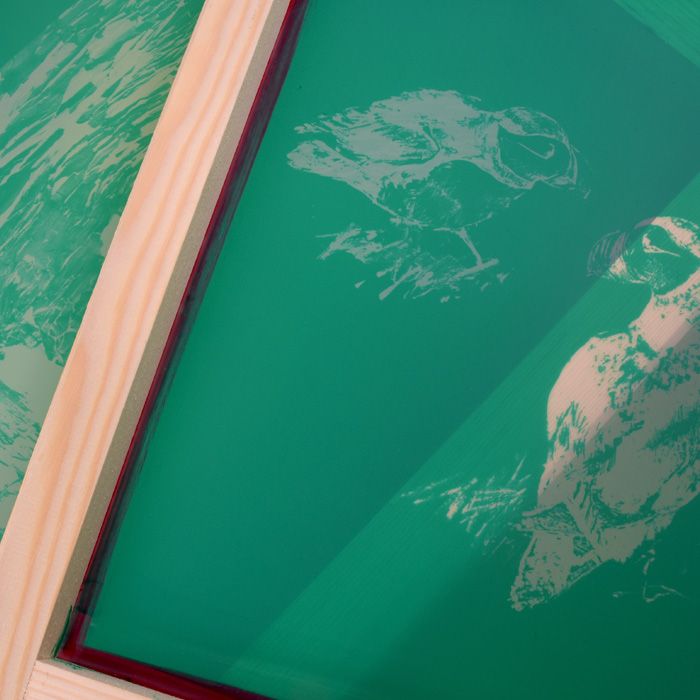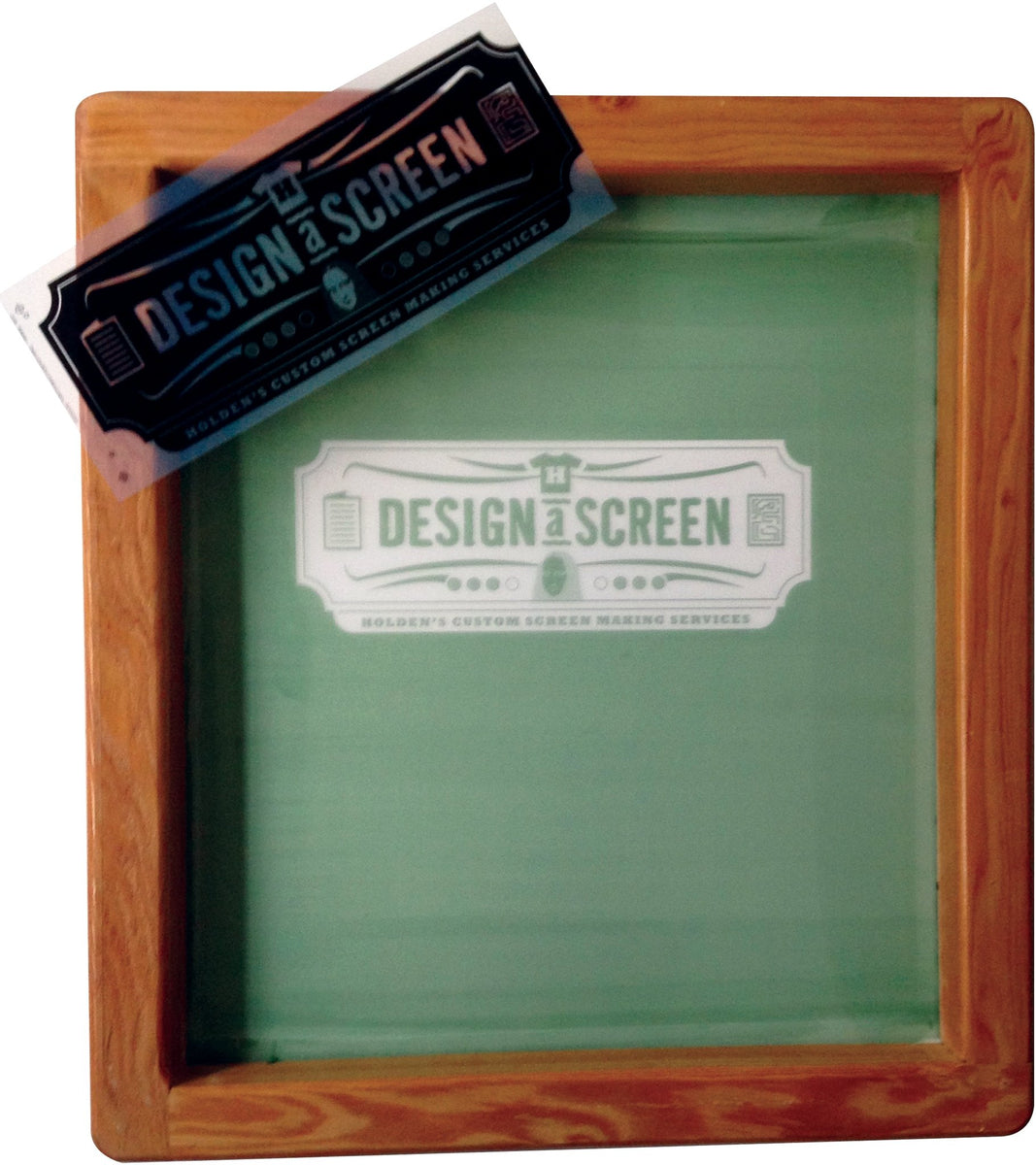Display Printing Uncovered: Everything You Required to Learn About Tee Shirt and Garment Printing Techniques
If you have actually ever before questioned how those vibrant designs end up on your favored tees, you remain in the best place. Display printing is a fascinating method that combines art with strategy, offering countless possibilities for imagination. Understanding the basics, from equipment to ink selections, can considerably influence your results. All set to check out the necessary aspects that make display printing an art form? Allow's uncover the details that can raise your tasks.
The Fundamentals of Display Printing: How It Works
When you dive into screen printing, you'll find it's both an art and a scientific research. At its core, screen printing involves producing a pattern, or display, that enables ink to travel through just in specific areas (screen printing kit). You start by choosing your layout and preparing your display with a light-sensitive emulsion. Once you reveal this emulsion to light, it solidifies, leaving your layout as a negative room.
Setting the screen over the material, after that utilize a squeegee to push ink with the screen onto the garment. Each step is crucial, and understanding them will certainly boost your display printing abilities, changing basic garments into unique, expressive items.
Sorts Of Display Printing Methods
As soon as you realize the essentials of display printing, it's time to check out the various methods that can elevate your designs. One prominent approach is typical screen printing, where ink is pushed via a stenciled screen. This technique is terrific for bold, vivid shades. There's water-based ink printing, which supplies a softer feel and is environment-friendly, but it needs a various method to treating.
If you're going for fine information, consider discharge printing. This technique eliminates dye from the textile, leaving a soft, vintage appearance. An additional choice is plastisol printing, recognized for its sturdiness and vibrant shades, making it a preferred for numerous brand names. Ultimately, try out halftone printing to create gradient effects and complex layouts. Each strategy has its unique beauty, so don't hesitate to try them bent on locate what matches your design best!
Essential Devices for Display Printing
To attain sensational results in display printing, having the right tools is basic. You'll need a tough screen printing structure, which holds the mesh that transfers your design onto the garment. Next off, spend in high-quality squeegees; these are important for using ink equally throughout the screen.
Picking the Right Inks and Products
When picking inks and materials for display printing, you require to take into account the kind of ink that functions best for your project. Consider fabric compatibility to ensure your layouts look last and fantastic long. Discover environment-friendly ink choices to make your printing procedure more sustainable.
Kinds Of Display Inks
Choosing the right screen ink is important for attaining lively, durable prints that fulfill your task's needs. There are numerous types of screen inks to take a look at. Plastisol ink is preferred for its flexibility and ease of usage, supplying excellent shade opacity on dark textiles. Water-based ink, on the other hand, supplies a softer feeling and is environment-friendly, making it optimal for those aiming to minimize their ecological influence. Release inks remove dye from the fabric, causing a soft, classic look however call for certain handling. Finally, specialty inks, such as glow-in-the-dark or metal, can include special results to your designs. Evaluate your job requirements and select the ink that lines up finest with your preferred end result.

Textile Compatibility Factors To Consider
Recognizing textile compatibility is vital for achieving premium screen prints, particularly because various materials react distinctively to various inks. Always examine your inks on sample material to assure they stick appropriately and maintain shade integrity. Additionally, maintain in mind that material weight and appearance can affect the final end result, so choosing the appropriate ink and material combination is important for your job's success.
Eco-Friendly Ink Options
Environmentally friendly inks are coming to be a preferred choice for display printers that wish to lessen their environmental impact while maintaining quality. When selecting inks, think about water-based inks, which are much less damaging and simpler to tidy up contrasted to traditional solvents. These inks bond well with textiles, providing vivid outcomes without hazardous chemicals. You could also check out eco-solvent inks that make use of fewer unpredictable natural substances (VOCs), making them a safer choice for both your health and the planet.
Additionally, search for inks made from eco-friendly sources, such as soy or vegetable-based alternatives. By picking the ideal inks and products, you'll not just develop spectacular layouts however additionally add to a more sustainable printing procedure. Make the button, and your prints will certainly mirror your dedication to the environment!
Preparing Your Style for Screen Printing

Submit Format Requirements
To guarantee your style looks vivid and sharp on material, you'll require to pay close focus to file layout demands for screen printing. Make sure your style has a clear history to protect against unwanted white edges on your prints. Maintain color modes in mind; CMYK is common for display printing, so transform your RGB develops accordingly.
Color Separation Techniques
Shade separation is an important action in preparing your style for display printing, and mastering it can greatly boost your print top quality. You'll require to damage your style into specific colors, as each see this page shade requires a separate display during printing. Beginning by identifying all the colors in your style and produce layers for each one. You can make use of software like Adobe Photoshop or Illustrator to isolate and separate shades effectively. Be certain to save each layer as a different documents, usually in a format like TIFF or PSD. This precision not just guarantees accurate shade depiction yet likewise streamlines the printing procedure. By taking notice of color separation, you'll attain specialist and vivid results in your screen-printed garments.
Resolution and Dimension
Accomplishing the best cause screen printing begins with ensuring your layout has the best resolution and dimension. Preferably, your artwork ought to be at the very least 300 DPI (dots per inch) for sharp, clear prints. Your final item may look less than professional and pixelated. if you make use of reduced resolution.
When it comes to size, take into consideration the dimensions of your print area. Style your art continue reading this work to match the last print dimension, ideally developing it in the actual dimensions you'll be printing. In this manner, you'll stay clear of any type of unforeseen scaling problems.
Always examine your style in both vector and raster styles. Vector graphics can be scaled without losing high quality, making them suitable for display printing. Preparing correctly will assure your style looks fantastic on every garment!
Step-by-Step Screen Printing Process
Display printing is a vibrant procedure that enables you to develop lively layouts on various surfaces. To obtain begun, you'll require a display, solution, and your chosen ink.
Put ink onto the display and make use of a squeegee to press the ink through the pattern onto the material. Lift the screen carefully and allow the print dry. You've effectively screen printed your style.
Tips for Successful Screen Printing Projects
While you're diving into your display printing jobs, keep in mind that preparation is essential to success. Begin by collecting all your materials-- inks, squeegees, displays, and garments. A tidy work area assists protect against undesirable mistakes, so clean before you start.
Next, validate your art work is high-resolution and properly sized for your garment. Evaluate your screen for correct exposure and tidy it extensively to avoid smudges. When blending your inks, comply with the supplier's standards you can try this out to attain the right uniformity.
Throughout printing, apply also pressure with your squeegee for regular outcomes. Don't rush; take your time to confirm each print satisfies your standards. After printing, allow your garments dry totally prior to taking care of or packaging them.
Finally, always keep an example of your benefit future reference. By doing this, you can analyze your progression and boost your techniques with time. Delighted printing!

Regularly Asked Inquiries
For how long Does It Require To Set up a Display Printing Work?
Establishing a screen printing work commonly takes around 30 mins to an hour. You'll prepare the displays, mix inks, and change the press. The moment differs based upon intricacy and experience, so remain arranged!
Can I Publish on Various Textile Keys In Making Use Of the Exact Same Method?
Yes, you can publish on various fabric kinds using the very same strategy, however you'll need to readjust your setups and inks. Some materials soak up ink in different ways, so experimenting warranties the most effective results for each and every material.
What Prevail Errors to Avoid in Display Printing?
When screen printing, avoid usual errors like making use of the wrong ink, disregarding proper direct exposure times, or missing pre-press checks. Always test your arrangement and preserve clean displays to ensure quality outcomes each time.
How Can I Properly Tidy and Preserve My Display Printing Equipment?
To appropriately tidy and keep your screen printing tools, you need to frequently wash screens with suitable solvents, examine squeegees for wear, and assure all devices are saved dust-free and completely dry. Consistency stops expensive repair services and enhances efficiency.
Is Screen Printing Eco-friendly Contrasted to Other Methods?
Display printing can be more eco friendly than other approaches, especially if you make use of eco-conscious products and water-based inks. By selecting sustainable materials and methods, you lower waste and decrease your influence on the world.
Display Printing Uncovered: Everything You Need to Know Regarding Tee and Garment Printing Strategies
At its core, screen printing includes developing a stencil, or screen, that enables ink to pass through just in specific locations. Position the screen over the fabric, after that make use of a squeegee to push ink with the screen onto the garment. One prominent approach is typical screen printing, where ink is pushed via a stenciled display.When choosing inks and materials for screen printing, you need to take into account the type of ink that functions finest for your project.